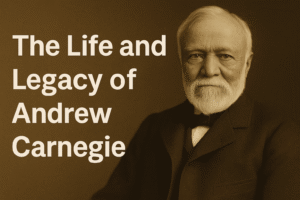Genghis Khan forged the largest land empire in history through vision, brutality, and strategy. His legacy reshaped the world in ways still felt today.
The Early Struggles That Forged A Legend
Long before the name “Genghis Khan” would send tremors through continents, a boy named Temujin was born on the harsh Mongolian steppe in 1162. His early life was a relentless series of betrayals, exiles, and loss. When Temujin was only nine years old, his father, a tribal chief, was poisoned by rivals. In the unforgiving nomadic culture of the Mongols, this meant his family lost their status and protection. Abandoned by their own clan, Temujin, his mother, and siblings were forced to survive in the wild by foraging and fishing.
Temujin learned from an early age that alliances were fragile, and survival depended on both cunning and strength. His rise began with acts of brutal pragmatism—he killed his older half-brother to become the head of his family and fought off rival tribes, gradually building a reputation as a fearsome and decisive leader. But it wasn’t just brute force that defined him. Temujin was a shrewd politician and an adept unifier. He understood the chaos of tribal life and sought to tame it, not just to survive—but to dominate.
By his late twenties, Temujin had begun to consolidate scattered Mongol tribes, promoting warriors based on loyalty and merit rather than aristocratic lineage. This move alone disrupted centuries of steppe tradition. By 1206, he was crowned “Genghis Khan,” meaning “universal ruler.” It marked the beginning of an empire-building spree the world had never seen.
How The Mongol War Machine Redefined Warfare
Genghis Khan’s military campaigns were a masterclass in organization, speed, and terror. His warriors could ride for days on end, covering 100 miles a day—thanks to their deep bond with their horses and a network of relay stations. But beyond their endurance, it was their coordination and tactics that made them devastating.
Unlike the lumbering armies of medieval Europe or the rigid formations of Chinese dynasties, Mongol warriors moved like flowing water. They could feint retreats, flank swiftly, or launch surprise night attacks. They communicated using smoke signals, flags, and pre-arranged whistles—a form of battlefield communication centuries ahead of its time.
Genghis introduced strict discipline to his army. Looting before the fall of a city was punishable by death. Soldiers were forbidden from harming messengers and religious figures. He also created an elite unit—the 10,000-strong “Kheshig,” or imperial guard—loyal solely to him.
But it wasn’t just martial skill. Genghis Khan weaponized fear. Cities that resisted him were annihilated, sometimes with hundreds of thousands slaughtered. Survivors spread stories of Mongol wrath, often surrendering without a fight when the banners of Genghis appeared on the horizon.
Under his command, the Mongols overran vast regions of Central Asia, Persia, and northern China. Cities like Samarkand, Bukhara, and Zhongdu (modern-day Beijing) fell to his armies. Yet, Genghis did not merely destroy—he also built.
The Empire Built On Law Trade And Tolerance
While his conquests were brutal, Genghis Khan was not a mindless destroyer. He was also a state-builder. After establishing his empire, he created a legal code known as the Yassa. It covered military conduct, theft, religious freedom, and even environmental protection. The goal was stability across the multicultural, sprawling empire.
One of Genghis Khan’s most radical policies was his approach to religion. Unlike many rulers of his time, he allowed complete religious freedom. Muslims, Christians, Buddhists, Taoists, and even shamanists thrived within his empire. His logic was practical: religious leaders were often community leaders. By protecting them, he fostered loyalty.
Trade flourished under his reign. The Silk Road, previously choked by banditry and border conflicts, became a superhighway of commerce. Caravanserais (inns for traveling merchants), postal stations, and police patrols kept the route safe. Goods, ideas, and cultures moved more freely than ever before—from Europe to China.
Genghis Khan’s administrative acumen extended to meritocracy. He elevated commoners who proved themselves competent. His chief advisors included a former Chinese bureaucrat, a Muslim merchant, and even defected enemy generals. In a world ruled by hereditary privilege, this was revolutionary.
Family Power And Ruthless Succession
While Genghis Khan had dozens of children, four sons by his primary wife, Börte, were considered his legitimate heirs. As his empire expanded, so too did his anxiety about succession. Temujin was meticulous—he divided his empire among his sons, but retained supreme power during his life.
He trained them as commanders, giving them territories to rule and involving them in his campaigns. Jochi, his eldest son, had a strained relationship with Genghis due to doubts about his paternity, but he remained a powerful leader. Chagatai, known for his fierce temper, was assigned Central Asia. Ögedei, the third son, was chosen as his successor, while Tolui, the youngest, remained in Mongolia with the imperial treasury and homeland guard.
After Genghis’s death in 1227, his sons and grandsons would continue to expand the empire. Ögedei completed the conquest of northern China and launched attacks on Eastern Europe. Later, Kublai Khan—Genghis’s grandson—would become the first non-Chinese emperor of China and establish the Yuan Dynasty.
But this family unity was short-lived. Over the next century, the Mongol Empire splintered into four khanates. Though each maintained the legacy of Genghis in some form, they also began to diverge in language, culture, and politics.
How Genghis Khan Changed The World Forever
It’s impossible to overstate the global impact of Genghis Khan. His conquests redrew the world map, destroyed ancient kingdoms, and gave birth to new states. But his influence went beyond borders.
The Mongol expansion indirectly led to the Renaissance. How? By reopening trade between East and West, the Mongols reconnected Europe with the knowledge of the Islamic Golden Age and China’s advanced technologies. Paper, gunpowder, and printing moved westward. Marco Polo traveled through the Mongol empire, and his writings inspired generations of explorers.
His postal system was the most efficient communication network of the pre-modern world, a forerunner to national postal systems today. Diplomacy under the Mongols became more structured, with protected envoys and established protocols.
Genghis Khan also introduced brutal but effective counter-insurgency strategies—such as targeting civilian support systems—that were studied centuries later by modern generals.
Some historians argue that the Black Death spread rapidly due to Mongol trade routes. While tragic, it also transformed Europe, weakening feudalism and accelerating social change.
And linguistically, his legacy lives on. Mongolian remains a dominant language in the region, and many Turkic tribes who once served under his banner spread Mongol words into their vocabularies.
The Man The West Misunderstood
For centuries, Western depictions of Genghis Khan bordered on caricature—portraying him as a bloodthirsty barbarian with no culture, no heart, and no humanity. This view was shaped largely by European chroniclers and Persian scholars who bore the brunt of Mongol invasions.
However, modern historians—drawing from Mongolian chronicles like the “Secret History of the Mongols”—paint a far more complex picture. Genghis Khan emerges not just as a conqueror, but as a visionary leader, a unifier, and a surprisingly progressive ruler for his time.
He valued education, even though he was illiterate. He funded scholars, artists, and engineers. His empire created some of the first global laws about trade, hostage exchange, and diplomatic immunity.
Even his brutal tactics had a method. By making examples out of defiant cities, he avoided prolonged wars. His terror was strategic, not random.
In Mongolia today, Genghis Khan is a national hero. His name graces airports, vodka bottles, currency, and monuments. He is revered not just for his military prowess, but for giving the Mongol people a lasting sense of identity, pride, and unity.
I am working on building a passive income stream using the internet. If you would like to do the same take a look at this business by clicking here.
This business can be operated using the internet and the start up cost is low. I don’t have to leave my current employment to work on building this global business.
If you like what you see, work with me to build a passive income stream using this global business.
I do not provide personal investment or financial advice and I am not a qualified licensed investment advisor. I am documenting my online investment and financial journey and what’s working for me. Click Here to read disclaimer.
If you found value in this post and want to support my work, click here to buy me a coffee.
Subscribe to my list for valuable updates, tools, videos and articles that I will share as I come across them.
Let me know your thoughts on this post via the comments section. You can also add your insights and suggestions.
If you enjoyed reading this post or it added some value, please share it with others.

Follow My Journey And Get Inspired To Transform Your Life For The Better
“I may earn commissions as an affiliate from sponsored links within this post”





